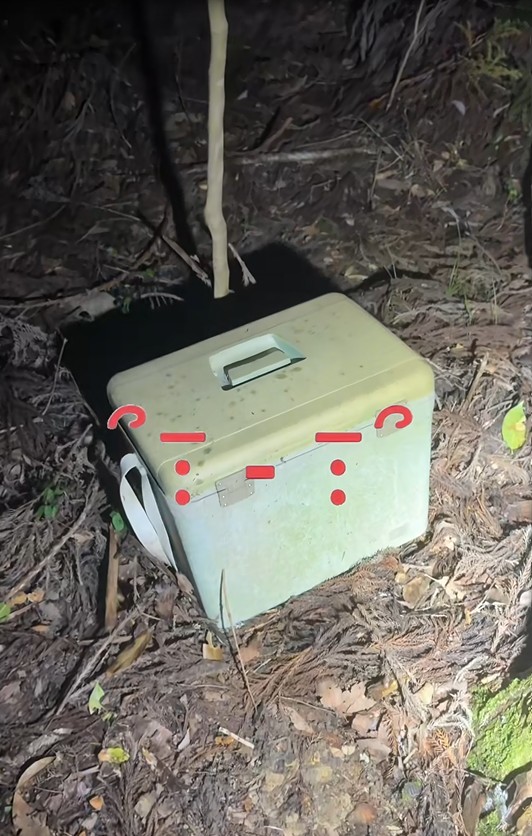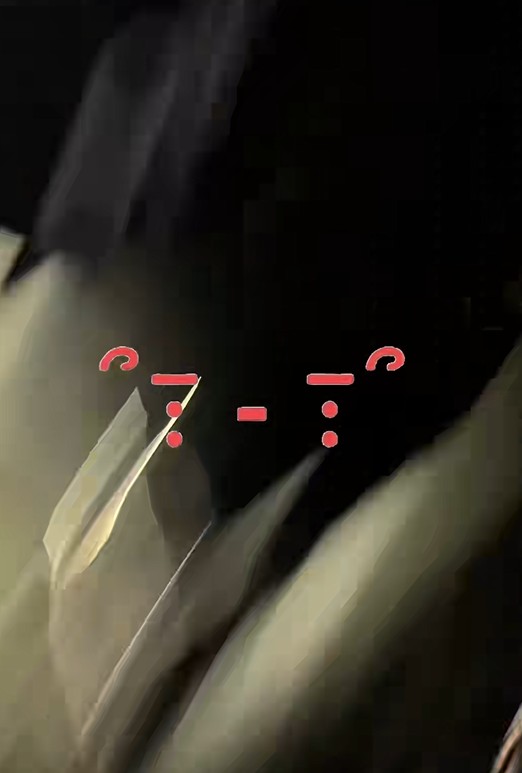Nama Cooler Box Unblurred Video and The Disturbing Clip
In the ever-expanding world of internet virality, few clips have stirred as much confusion and disgust as the so-called “Nama Cooler Box unblurred video.” What begins as a seemingly innocent exploration video quickly transforms into something deeply revolting a moment that left viewers around the world stunned, nauseated, and endlessly curious about its origins. Though its contents are brief, the video has become a minor digital mystery, raising broader questions about the online appetite for shock and the moral boundaries of viral content.

Contents
- 1 A Shocking Discovery in the Woods and Video
- 2 The Rapid Spread Across Social Media
- 3 Public Reaction: Disgust, Curiosity, and Dark Humor
- 4 Theories and Speculation About Its Origins
- 5 The Psychological Impact of Shock Videos
- 6 Internet Sleuths and the Search for Answers
- 7 Echoes of Past Viral Shock Content
- 8 The Symbolism of the Cooler Box
- 9 Ethical Reflections and Lessons
A Shocking Discovery in the Woods and Video
The video, reportedly filmed by two young men believed to be Japanese, opens in a dense forest. The pair appear to be casually exploring, filming their surroundings with curiosity. Laughter and light conversation fill the audio, suggesting an ordinary day of adventure. Then, the camera focuses on an object partially buried beneath fallen leaves a weathered cooler box, the type typically used for storing food or drinks.
The Nama Cooler Box video left everyone stunned when it was opened
nama-cooler-box-unblurred-video.mp4
At first glance, there is nothing alarming about the find. One of the men opens the lid while his companion continues recording. But the atmosphere changes instantly. As the cooler tilts, its contents spill out onto the ground and to the horror of viewers, it appears to contain human or animal feces mixed with some kind of decaying organic matter. The reaction from the men is audible shock; they step back, gagging and shouting in disbelief. The video cuts shortly afterward, leaving no explanation, only a lingering sense of disgust.
The simplicity of the clip two people, a forest, and a grotesque surprise was enough to make it go viral. Its unfiltered realism gave it an unsettling authenticity that blurred the line between a prank, a hoax, and a potential crime scene.
The Rapid Spread Across Social Media
Within hours of its initial upload, the “Nama Cooler Box” clip began circulating widely on platforms such as X (formerly Twitter), Reddit, and Telegram. Some users encountered a blurred version, while others sought out the unblurred original, which quickly became one of the most searched keywords across certain online forums. Phrases like “Nama cooler box unblurred video” and “Japanese forest cooler box clip” trended briefly, as users debated whether the footage was real or staged.

Reactions ranged from sheer disgust to morbid fascination. Some viewers compared it to old “shock videos” from the early days of the internet, while others speculated that it could be part of a larger disturbing trend of viral shock content. As the clip spread, many platforms began removing it for violating community guidelines related to “graphic or disturbing content.” However, as is often the case, once something hits the internet, it’s nearly impossible to erase completely. Reuploads and re-encoded versions continued to circulate in private Telegram channels and niche Reddit communities.
Public Reaction: Disgust, Curiosity, and Dark Humor
Internet users are notorious for turning almost any viral phenomenon no matter how horrifying into memes or jokes. The “Nama Cooler Box” video was no exception. Some meme creators edited reaction faces over the clip or turned the moment of discovery into GIFs paired with humorous captions. Others criticized this behavior, arguing that trivializing something so revolting reflects the internet’s growing desensitization to extreme imagery.
On Reddit threads, viewers analyzed the men’s language, accent, and expressions, confirming that they were likely Japanese. A few users suggested that the clip might have been part of a YouTube-style “exploration” video that went wrong, while others speculated darker possibilities such as the cooler being connected to illegal dumping or even a bizarre artistic statement. The lack of definitive information only fueled the intrigue further.
Theories and Speculation About Its Origins
Because no one has claimed responsibility for uploading the original video, theories have flourished. One popular theory suggests the video originated from a now-defunct Japanese forum known for “nama” (raw or unedited) clips. The term “nama” in Japanese can mean raw, uncensored, or live, implying that the footage was shown without filters or context. This would align with the video’s title and explain why it was labeled “unblurred” emphasizing that what viewers saw was entirely real.
Others think the video might be a piece of experimental art or social commentary a form of “shock performance” intended to evoke disgust and reflection. Japan’s history with avant-garde video art, particularly in the underground scene, makes this theory plausible. However, without confirmation, it remains pure speculation.
Another, more pragmatic theory is that the video was simply a prank. Perhaps the cooler was deliberately filled with waste material to provoke a viral reaction. Yet, the men’s genuine shock and gagging reactions make this explanation less convincing.
The Psychological Impact of Shock Videos
Why do people keep watching these kinds of clips knowing they will be disgusted or disturbed? Psychologists refer to this paradox as “morbid curiosity.” Human beings are naturally drawn to the forbidden and the grotesque. The internet amplifies this instinct by offering instant access to experiences that would otherwise be hidden or taboo.
For some, watching such clips triggers a rush of adrenaline or disbelief a momentary thrill that mixes horror and fascination. For others, it serves as a coping mechanism, allowing them to confront discomfort in a controlled environment. However, repeated exposure to graphic or disgusting content can dull empathy and desensitize viewers, a growing concern in the digital age.
The “Nama Cooler Box” incident reignites the debate about whether these videos should circulate freely or be censored. While some argue for freedom of information, others see no artistic or educational value in sharing material designed purely to disgust.
Internet Sleuths and the Search for Answers
As with many viral mysteries, online investigators tried to uncover the truth. Users on imageboard sites and Reddit’s “r/InternetMysteries” community examined the video frame by frame, looking for clues about its origin. Some attempted to identify the forest’s vegetation, suggesting it might be somewhere in central Japan. Others pointed out the camera model used, arguing it matched consumer camcorders popular in the early 2000s possibly indicating the clip was old and only recently resurfaced.
Despite all these efforts, no verified information about the men, the location, or the purpose of the video has surfaced. No Japanese news outlet or police department has acknowledged the case, and the clip remains in an ambiguous space between internet folklore and disturbing reality.
Echoes of Past Viral Shock Content
The “Nama Cooler Box” phenomenon recalls the internet’s earlier obsession with grotesque and taboo material. From the infamous “2 Girls 1 Cup” in the 2000s to more recent dark web rumors, online audiences have repeatedly proven their willingness to watch horrifying content often out of sheer curiosity. The difference today lies in how quickly such content spreads and how public reactions unfold across mainstream platforms.
In a sense, this video represents a modern iteration of digital voyeurism. People know they will be disgusted, yet they click anyway not to enjoy it, but to be part of the conversation, to say “I saw it.” The act of viewing becomes a social signal, a way to participate in a shared, if unsettling, experience.
The Symbolism of the Cooler Box
Beyond its literal shock value, the cooler box itself carries metaphorical weight. A cooler typically preserves freshness, associated with leisure, picnics, and comfort. In the “Nama Cooler Box” video, that symbol is inverted what should contain life and nourishment instead conceals filth and decay. It becomes a haunting metaphor for the hidden rot within digital culture: the repulsive things people willingly seek beneath the surface of the internet.
Even the word “nama,” meaning raw, reinforces this duality a raw, unfiltered view not just of the forest discovery, but of human curiosity itself.
Ethical Reflections and Lessons
The rise of clips like the “Nama Cooler Box” video forces society to confront uncomfortable truths about the nature of online consumption. Platforms struggle to balance free expression with community safety, while users wrestle with their own curiosity and disgust. The viral cycle rewards extremity the more shocking a clip, the faster it spreads.
As technology continues to evolve, so too will humanity’s threshold for shock. The “Nama Cooler Box” video, despite its crude simplicity, stands as a mirror reflecting our collective fascination with the grotesque. It reminds us that in the endless scroll of digital content, sometimes the most unsettling things are not what we see but why we choose to see them.
Daily Hot News -Balin Miller Death Fall Livestream Video on TikTok, Twitter, Reddit and El Capitan
Manchester Synagogue Stabbing Attack and Shooting Video
Edwin Cruz Gomez Video and Jhoanny Gomez-Alvarez Death
Yordanis Cobos-Martinez Full Video Kill Chandra Nagamallaiah in Dallas Motel Beheading
Charlie Kirk Shooting Video on X/Twitter, Reddit and Close Up
Iryna Zarutska Video and Decarlos Brown Jr. in Charlotte
Obdulia Sanchez Live Stream Video and Tragedy
